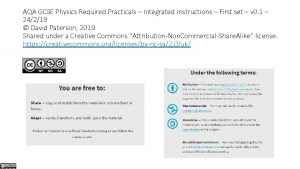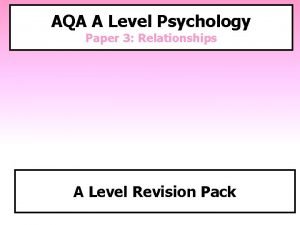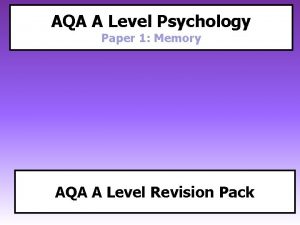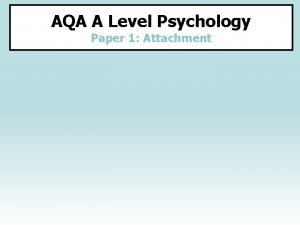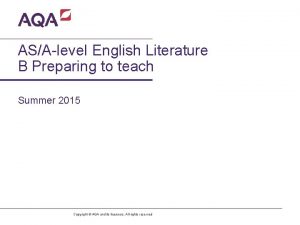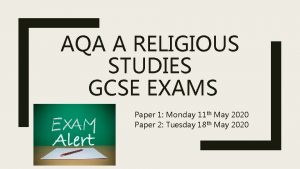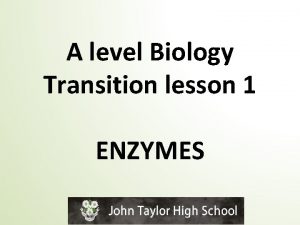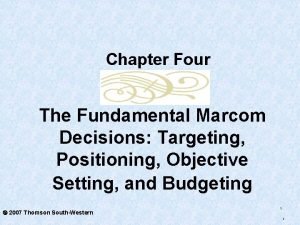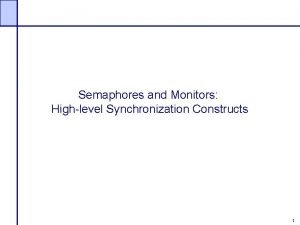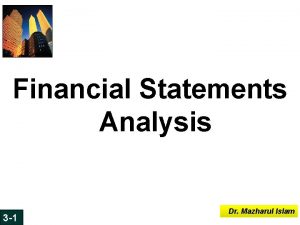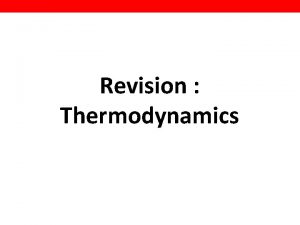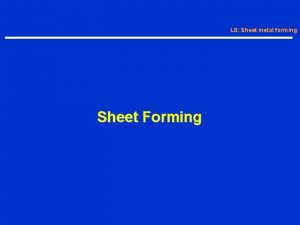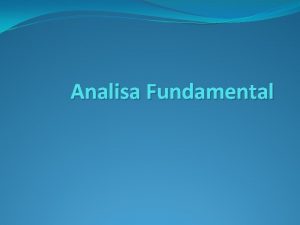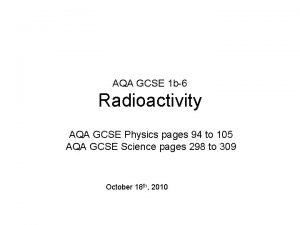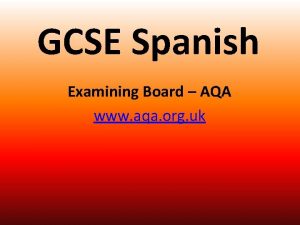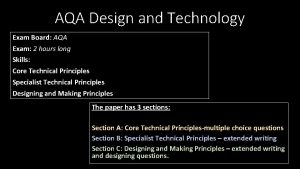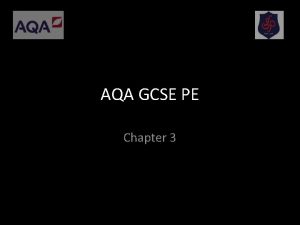The Data Sheet AQA AS Level DATA FUNDAMENTAL



















- Slides: 19

The Data Sheet AQA AS Level

DATA - FUNDAMENTAL CONSTANTS AND VALUES • Quality – highlight the ones you have come across – most are from A 2! • Symbol • Value - note most are 3 sig figs! • Units – a useful place to look if you forget the case of the letter - N, kg, J, W, C, m etc.

Useful. .

Probably not needed. . More an A 2 requirement!

Fundamental particles • No excuse for classifying them incorrectly!

Quarks • They even tell you that antiquarks have opposite signs. . • The fact that baryon number is in thirds tells you a baryon has three quarks in it!

Leptons • Charges are indicated • Masses etc are in data section. . .

Photons – Electromagnetic quanta of energy and/or waves • The first two deal with e. m. Waves • de. Broglie links particles (momentum – mass) and waves (wavelength) – used to find the wavelength of a mass particle

Electricity • The first four can be used to express definitions. . .

Current - I • Electric current is how much charge moves in unit time (rate of flow of charge) • Need to know Q is Quantity of charge

Potential difference - V • Potential difference is the energy transferred per unit charge (coulomb).

Resistance - R • The electical resistance of a component is the ratio of the potential difference across the component to the current passing through it.

Electromotive force • The electromotive force is the energy per coulomb produced by a source of electricity. e

EMF - e • EMF = voltage across external circuit (IR) plus voltage across the internal resistance (called ‘lost volts’) • Now V = IR – so we can replace that. . . • e = V + Ir

Resistor combinations

Power – they already give you all combinations! (No excuse!!!)

Resistivity is not another word for resistance! • Resistivity is resistance of a specimen of unit length and unit cross sectional area. • Unit is Wm not W – they are different!

AC • • Io is the peak current Vo is the peak voltage IRMS is the root mean square current VRMS is the root mean square voltage

Oscilloscope • This is in the waves section – and is needed to interpret the trace on an oscilloscope.
 Aqa a level data sheet
Aqa a level data sheet Gas exchange in fish a level biology aqa
Gas exchange in fish a level biology aqa Bbc bitesize stanislavski
Bbc bitesize stanislavski Aqa physics required practicals
Aqa physics required practicals Equity theory a level psychology
Equity theory a level psychology Memory psychology a level
Memory psychology a level Jin et al attachment study
Jin et al attachment study Social and political protest writing examples
Social and political protest writing examples Aqa gcse religious studies 2020 paper
Aqa gcse religious studies 2020 paper Aqa a level art and design
Aqa a level art and design Art and design a level aqa
Art and design a level aqa Art and design a level aqa
Art and design a level aqa Aqa a level biology transition guide answers
Aqa a level biology transition guide answers Aqa a level chemistry paper 1 2020
Aqa a level chemistry paper 1 2020 Aqa a level history extract question
Aqa a level history extract question Marcom decision
Marcom decision High level synchronization construct
High level synchronization construct Ocfcl
Ocfcl Verification of stock in trade
Verification of stock in trade Hình ảnh bộ gõ cơ thể búng tay
Hình ảnh bộ gõ cơ thể búng tay



